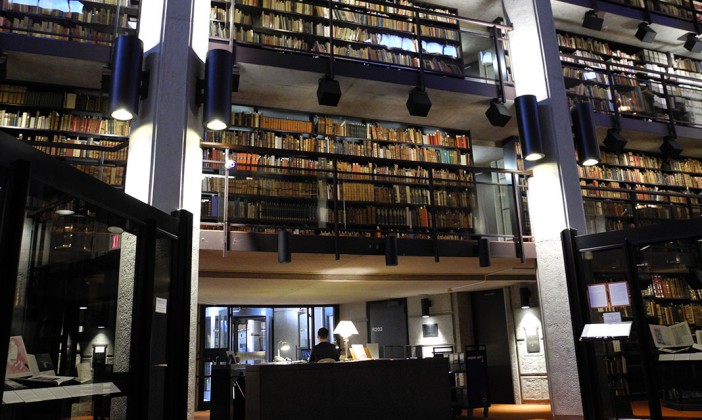The Thomas Fisher Rare Book Library is now featuring its exhibition on modern Czech book design. The well-preserved works on display include some of the major Czechoslovakian designers, writers, illustrators, and artists of the early 20th century. These works encapsulate the prominent ideologies, or “-isms”, of the time, such as Surrealism, Cubism, Symbolism, Poetism, and more.
When the library was established in 1973, Fisher’s family donated their collection of Shakespearean titles, 20th century authors, and 17th century etchings to the institution. Almost two centuries later, the library has matured into an expansive establishment, containing roughly 700,000 volumes and 3,000 linear metres of manuscript.
The library includes the Department of Rare Books and Special Collections, which houses a vast supply of volumes and manuscripts. The department began in 1955 with a pile of rare material in a forgotten room on campus. Once sorted, this collection spawned the creation of a Rare Book Room in 1957, which later found proper housing in the Thomas Fisher Rare Book Library upon its establishment.
The library features three exhibitions a year, in which curators display the culture and functionality of different eras of literature, language, and design.
Maximum Imaginativeness, the leading title of the current exhibition, features modern Czech book design and illustration crafted between 1900 and 1950. The curator of the exhibition, Ksenya Kiebuzinski, explains the name as “taken from an essay by the artist Jindrich Styrsy and Toyen, written in 1927, in which they explore the relationship between art and reality”. Maximum Imaginativeness is an archive of books, journals, and illustrations that trace 20th-century Czechoslovakia through its advancement in book design and illustration. The period includes developments in typography, book covers, binding, graphic design, photomontage, and more. During the half-century the exhibition covers, there occur specific phases, including a focus on the aesthetics of book design as well as a focus on literary content. It is during these phases that different “-isms” of the time, such as Styrsy and Toyen’s artificialism, are evident.
Karel Dyrynk (1876-1949), one of the designers on display, was a Czech typographer, typeface creator, and editor. Dyrynk was interested in the aesthetics of book design. He viewed books as works of art and believed in crafting them with the highest regard for beauty. More specifically, Dyrynk was an admirer of lettering. He believed in the craft of typography and the ornamental production of lettering on paper. Dyrynk was particularly fascinated by the works of Josef Vachal (1884-1969), a Czech writer, painter, printmaker, and book-printer. Dyrynk praised Vachal for his originality and artistry in the realm of hand-printed lettering.
Dyrynk was centred in Prague, where he directed the State Printing House and designed five original typefaces. Two of his books on display at the library’s exhibition include The Typographer on Books and Rules of Typesetting.
The exhibition opened on September 28 and runs until December 18.









